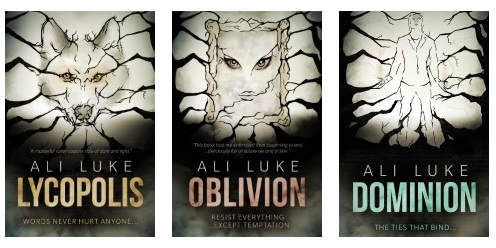Alison Habens on Using Fairy-Tales and Myths to Inspire Your Writing
 “Writing Stories: Telling Tales” was a workshop run by Alison Habens, a lecturer in creative writing at the University of Portsmouth, about writing from fairy-tale and myth. It sounded a bit different to the courses I’d been on before, so I decided to give it a try.
“Writing Stories: Telling Tales” was a workshop run by Alison Habens, a lecturer in creative writing at the University of Portsmouth, about writing from fairy-tale and myth. It sounded a bit different to the courses I’d been on before, so I decided to give it a try.
Note: since “Writing Stories: Telling Tales” was in a workshop format, with lots of exercises, this post is a combination of what Alison said, plus my own thoughts (particularly on how this relates to recent movies).
Another reason why I wanted to attend this workshop – and why you might be interested in the topic – is that fairy-tales, in particular, seem to be enjoying a resurgence right now. This is happening in media aimed at teenagers or adults rather than at children: think of recent movies like Snow White and the Huntsman (2012) or Red Riding Hood (2011).
Here are just a few points to think about in using fairy-tales or myths to help inspire your writing:
(Image from Flickr by Sugar Daze.)
Numbers in Fairy-Tales
The number 3 is important; it builds tension and suspense. (Something happens the same way twice, then the third time is the exception.) This isn’t just common in fairytales and myths – there’s the “rule of three” in rhetoric. There are often three sisters (or brothers) and the youngest is the one who the story focuses on
The number 7 is also significant: seven dwarves, seven brides, and so on. (Seven also crops up a lot in the Bible. And, of course, we have seven days in the week.)
Transformation
Transformation happens when something changes. In fairytales and myths, this is through magic, and it can involve a change from human –> object. (For myths involving transformation, see Ovid’s Metamorphoses.)
In today’s superhero stories — think the most recent Avengers movie – transformation inevitably plays a role: this is usually through sufficiently advanced technology (e.g. Iron Man) or some unusual man-made or alien substance (e.g. the Hulk). In terms of story-function, this technology or substance fulfils exactly the same role as magic in fairytales. And, of course, both Thor and Loki are characters from myth, incorporated into modern story-telling.
Using Fairy-Tales
You don’t need to be writing fairy-tales or modern versions of myths in order to use elements from these stories in your writing. Think about:
- Character archetypes: mentors, tricksters, youngest children, the Greek or Roman gods…
- Basic plot outlines or situations: fairytales have a tried-and-tested structure.
- Adding hint of magic or the supernatural: using 3, 7 (or 12 comes up sometimes too).
I’ll leave you with a writing prompt – this was the first exercise that Alison gave us in the workshop. (Feel free to pop your response below in the comments, if you want!)
If you were a character from a fairy-tale or myth, who would you be and why?
About

I’m Ali Luke, and I live in Leeds in the UK with my husband and two children.
Aliventures is where I help you master the art, craft and business of writing.
Start Here
If you're new, welcome! These posts are good ones to start with:
Can You Call Yourself a “Writer” if You’re Not Currently Writing?
The Three Stages of Editing (and Nine Handy Do-it-Yourself Tips)
My Novels

My contemporary fantasy trilogy is available from Amazon. The books follow on from one another, so read Lycopolis first.
You can buy them all from Amazon, or read them FREE in Kindle Unlimited.

Interesting tips, thank you for them. I´m in the process of writing short-stories, any advice on them?
Luis Fernando Reyes’s last blog post ..¿Por qué los escritores deben leer?
Thanks Luis! Did you see my post about another Winchester conference session, on flash-fiction (or very short stories)? At least some of that would apply! It’s here: https://www.aliventures.com/john-gilbey-flash-fiction-short-short-stories
The more I read this article, the more I think my first novel was a fairy tale of sorts. Thanks for the wonderful tips.
ThomasDerry’s last blog post ..Writing: Paying Attention
Thanks, Thomas!
The troll under the bridge because young, tender goats can be tasty.
Oi, no trolls in my comments… 😉
This article intrigues me and I hope you will get more in-depth and expand upon these concepts in later articles. I still enjoy fairy tales and myths. I have been studying and collecting myths and legends since I was very young… and soon, I will turn 60.
Writing itself is a graphic depiction of our conscious and subconscious thoughts and musings painted in words instead of drawings. Words are thought images clothed in vocabulary and the images implanted deepest within our human psyche are of myth, legend, and fairy tales. And, these symbols are all around us in adverts and movies even if they do not depict the actual fairy tale or myth itself.
Numbers play an often subtle but dominant role in those fairy tales, myths, and ancient writings of faith because they represent truths and made it easier to share these truths with those who were illiterate, uneducated, or simply unable to spend time pondering or studying things above or greater than what was needed for their mundane daily livelihood.
Like words, numbers are powerful symbols that stir the deep things within us, even if we don’t know why.
Cheers.
Thanks, Doogie — and yes, as I was writing this one, I felt like there was a lot of room to say more! I’m sure this is something I’ll come back to.
What a beautiful description of writing and of words … I always think there’s something magical about being able to transfer my thoughts into other people’s heads (all round the world, too!) with a bunch of marks on the (virtual) page… 🙂
Apparently, one of the reasons for three cropping up so much is because it makes for an easy-to-remember pattern — important in the days of oral storytelling.
I’ve been in a super big fairytales/myths kick lately and whether it be you or Alison who pointed it out, you’re right. Fairytales are super big again lately – as well as myths.
I’m a HUGE fan of Rick Riordan, whose claim to fame would be the Percy Jackson series: Greek mythology in the modern world. He also has a series based on Egyptian mythology, and the continuation of the Percy universe using Roman mythology.
There were TWO different movies based on Snow White just this year alone! “Snow White and the Huntsman” as well as “Mirror, Mirror”.
Then – at least here in The States – there’s “Once Upon a Time” – a hit series loosely based on the comicbook series “Fables”, as well as “Grimm”. You also have British myth with “Merlin” being big. And Marvel superheros are more-or-less modern-day myths, so this is great advice for picking up on what’s popular.
And I’m going to abstain from answering the prompt… there’s just too many characters! I don’t know who I’d be!!!
LycoRogue’s last blog post ..Writing Spirit Renewed
Ah, I knew there’d been another Snow White one — had temporarily forgotten the title while writing this post! I’ve not read the Percy Jackson series, but I’ve heard a fair bit about it.
I’d not thought about Merlin (even though hubby is re-watching the series on DVD at the moment) — but you’re right, of course, that’s really caught on with both kids and adults here. Will have to look out for some of the series from the States too… 🙂
so right Ali
thoughts feed each other, when you get exposed to certain thoughts your mind starts responding with similar ones
Thanks, Farouk!